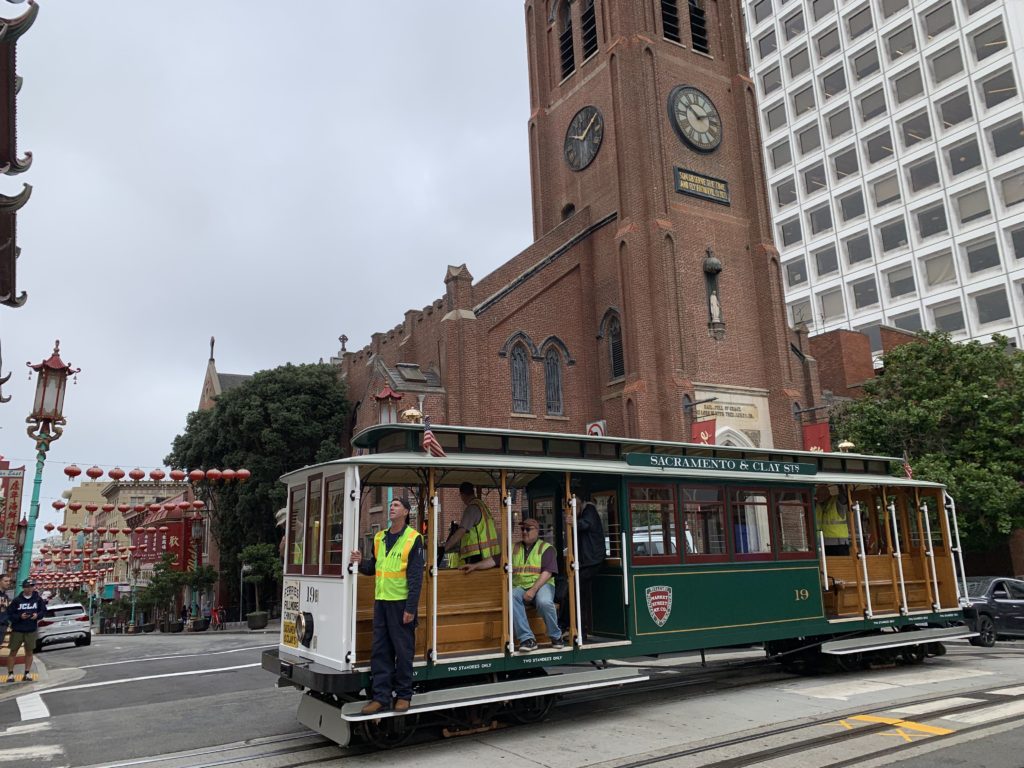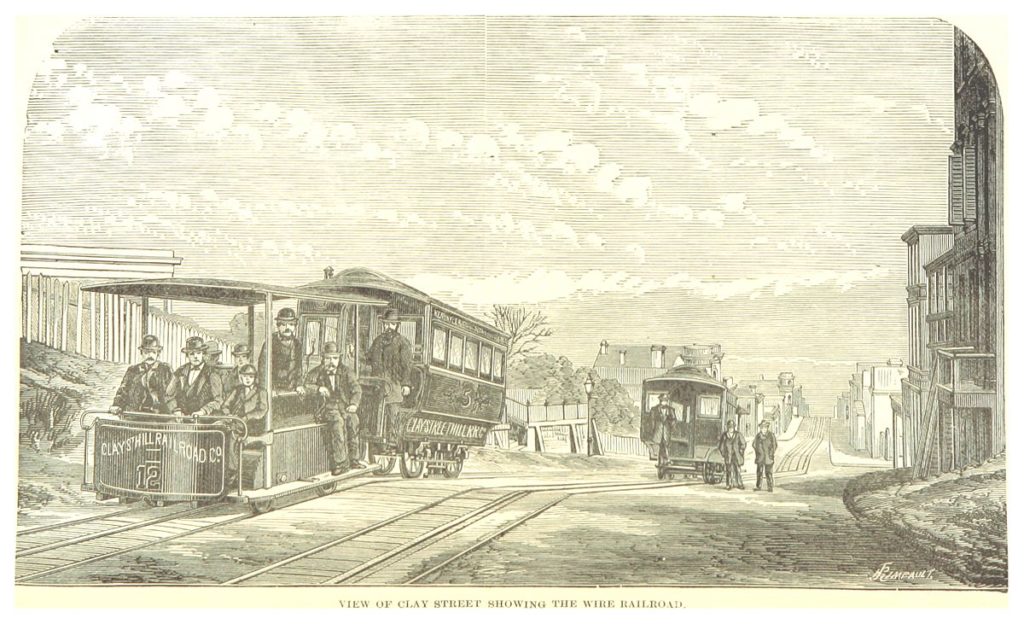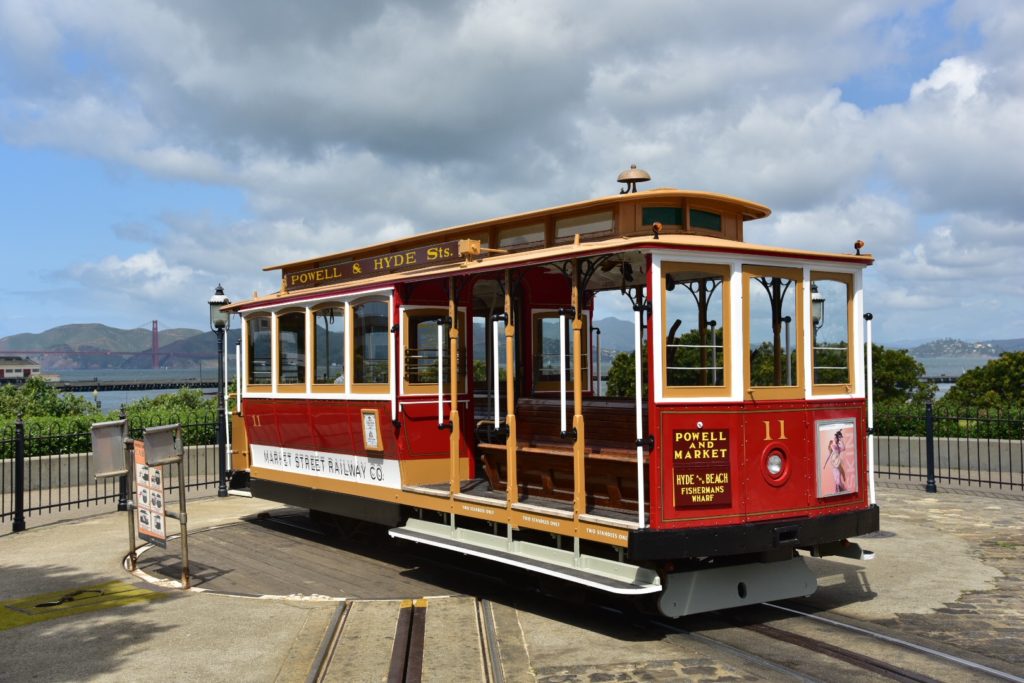August 2, 1873 — In the wee small hours of a misty San Francisco night (they didn’t call the month “Fogust” back then, but it was), a new type of transit was about to be inaugurated. An endless wire rope clattered beneath Clay Street. An odd open vehicle sat on the rails at the top of the hill. Standing by was Andrew Smith Hallidie, a Scot who had experience using wire rope in the mining business, and was part of the team promoting this new technology, aimed at making horsecars obsolete.
The operator of the little car peered out over the edge of the steep hill and decided, “Nope.” As the story goes, Hallidie himself stepped up, gripped the wire rope, went down the hill safely, and the cable car was born.
Some historians argue over the details of that opening run, but we’re not going to get into that here. What’s important is Hallidie’s invention swept across the world, seen as a dramatic technological improvement over existing rail transit (i.e. horse-drawn) technology. New York, London, LA, Sydney, even Oakland were among the dozens of cities that quickly built cable car systems.
But within a decade and a half, the faster electric streetcar came along and quickly supplanted cable cars. Cable lines on flat ground disappeared first, followed by those on hills, especially after bus technology improved. When the line in Dunedin, New Zealand closed in 1957, only San Francisco had street-running cable cars based on Hallidie’s invention.
That first cable line, on Clay Street, became part of a longer line in the late 1880s that ran one way on Clay and the other on Sacramento Street. The original “dummy-and-trailer” two-car Clay Street cable trains you see in the engraving above from Wikimedia Commons were replaced in the early 1890s by very familiar-looking new single-end cable cars – familiar-looking because you can still ride them!
Today’s Powell Car 11, below, was one of those cars bought for the Sacramento-Clay line, and is now painted in the 1890s red Sacramento-Clay livery to honor its original line (at Market Street Railway’s suggestion). After the 1906 earthquake and fire, cars from the Sacramento-Clay line that survived the conflagration were moved to the Powell lines, whose original fleet had burned up.
Today, besides Car 11, Powell Cars 2, 3, 5, 6, 7, 10, 12, 16, 17, 20, 22, 23, 24, 25, 26, and 27 originally served the Sacramento-Clay line. (Thanks to Joe Thompson’s Cable-Car-Guy website for the authoritative roster.) If you climb aboard any of these cars on the Powell-Hyde or Powell-Mason lines today, you’re experiencing a connection back to the first street on which cable cars ever ran.
On special occasions, you can also ride the last surviving double-end cable car that took over on the Sacramento-Clay line after ’06 and lasted until 1942 when the line was shut. Car “Big 19”, below, rebuilt from a Market Street cable car in 1907, has been restored thanks in part to advocacy from Market Street Railway. It operates on California Street, just a block south of its original route, as part of Muni Heritage events.

At the Cable Car Museum, the last surviving original car from the Clay Street Hill Railroad, Grip Car 8, is on display. It is entering its 150th year!
For next year’s 150th Anniversary of the first cable car line, Market Street Railway is planning some very special events. Stay tuned for details. Meantime, Happy 149th Anniversary of the first successful cable car system!
- By Rick Laubscher
If you like our exclusive content, please consider even a small donation to help our nonprofit.


Hi Rick – Great review and overview of the Cable Car System – Thanks!